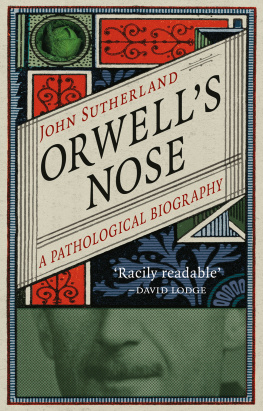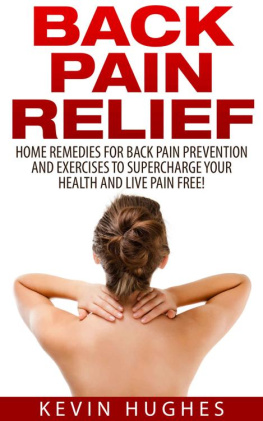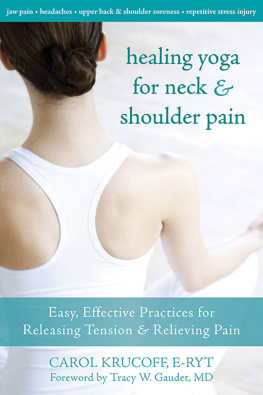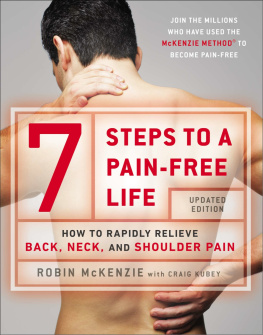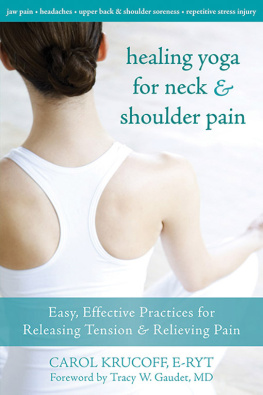Reverse Back and Shoulder Pain
Effective Home Exercises for Relieving Back and Shoulder Pain
Reverse Your Pain Series Book 3
Copyright 2019 Morgan Sutherland
All rights reserved.
No part of this book may be reproduced in any form without permission in writing from the author. Reviewers may quote brief passages in reviews. The information contained in this book is current at the time of this writing. Although all attempts have been made to verify the information provided in this publication, neither the author nor the publisher assume any responsibility for errors, omissions, or contrary interpretations of the subject matter herein.
This book is for entertainment purposes only. The views expressed are those of the author alone and should not be taken as expert instruction or commands. The reader is responsible for his or her own actions.
At times links might be used to illustrate a point, technique, or best practice. These will reference products I have found useful, but please do your own research, make appropriate comparisons, and form your own decisions as to which products will work best for you. Links to products are used to illustrate points, because they are the examples with which I am most familiar.
Illustrations: Copyright Morgan Sutherland
Cover image: 123RF
CONTENTS
MEDICAL DISCLAIMER
The information provided in this book is not intended to be a substitute for professional medical advice, diagnosis, or treatment. Never disregard or delay seeking professional medical advice because of something you read in this book. Never rely on information in this book in place of seeking professional medical advice.
Morgan Sutherland is not responsible or liable for any advice, course of treatment, diagnosis, other information, services, and/or products that you obtain in this book. You are encouraged to consult with your doctor or healthcare provider with regard to the information contained in this book. After reading this book, you are encouraged to review the information carefully with your professional healthcare provider.
Personal Disclaimer
I am not a doctor. The information I provide is based on my personal experiences and research as a licensed massage therapist. Any recommendations I make about posture, exercise, stretching, and massage should be discussed with your professional healthcare provider to prevent any risk to your health.
INTRODUCTION
Recently, I was at a popular burrito joint waiting for my order, so I naturally started observing the other customers gait and posture.
Ill admit that its hard to maintain perfect sitting posture while devouring a classic Mexican burrito.
However, I couldnt help but notice a handful of people who succumbed to gravity and slumped over their sumptuous burritos with Quasimodo-like hunchback posture.
Poor posture can lead to knots galore, especially in the back.
Eight out of every ten people experience back pain at some time in their lives.
Many of my back pain clients come into my office complaining of knots in their upper back, especially between their shoulder blades.
Stubborn knots or neck cricks, as some people call them, can make looking over your shoulder annoyingly tricky and painful.
Why is it when you sleep all twisted up like a pretzel, you awake wishing you had a four-year-olds Gumby flexible neck?
When your neck is bent to one side for an extended time, the muscles and ligaments stretch and can keep pulling to the point of tearing.
It can be a mild or a severe tear, and the resulting pain and limited movement can last for a day or two or for several weeks .
Not fun!
The bodys natural reaction to any contracted area with poor circulation is to lay down connective tissue (also known as collagen fibers, the building blocks of scar tissue).
Despite the healing nature of this process, it inevitably glues muscles and their connective tissue coverings into a shortened state, limiting the range of motion of joints and body parts.
However, when the knot is more serious, youll feel that your neck is sore, and theres muscle pain in your shoulder blade on the same side.
CAN MASSAGE HELP GET RID OF KNOTS IN YOUR BACK?
Yes! Massage is a conversation with your nervous system. Applying the right amount of pressure on a trigger point (a sensitive spot in the muscle area) for 10 seconds to a minute can soften the muscle tension and coax the nervous system to relax.
You can try self-massaging your knots with a tennis ball or a trigger point tool , or you can schedule a professional massage.
Massage is just part of the puzzle in reversing back and shoulder pain.
The other main tool to master is building a healthy habit of performing regular corrective exercises that combat the symptoms of bad posture, so you dont end up looking like the hunched-over supervillain Gru from Despicable Me.
UPPER CROSSED SYNDROME AND HOW TO FIX IT
The phenomenon of text neck, also referred to as upper crossed syndrome, has become a frequent ailment and seems like its unavoidable. Nearly everybody slumps their head to look at their smartphone. The next time you do, consider these facts...
The weight of the average head is equal to that of a bowling ball. As a person lets gravity take over, his or her cervical spine absorbs the brunt of that added weight.
At a 15-degree angle, this weight equates to about 27 pounds; at 30 degrees its 40 pounds; and when it reaches 60 degrees thats 60 pounds of pressure on your neck .
Sustained forward head posture overstretches the neck muscles, leaving them sore and inflamed. Not only can text neck cause muscle strains, pinched nerves, and herniated disks, but over time it can even erase the necks natural curve.
Upper crossed syndrome is a pattern of muscular imbalances and postural distortions in the head, neck, and upper shoulders.
These imbalances can occur when muscles are continuously tightened and shortened or overstretched and weakened.
This condition is given its name because an X (in other words, crossed) can be drawn across the upper body.
Specifically, the muscles at the back of the neck and shoulders (upper trapezius and levator scapulae) become incredibly tight. The muscles in the front of the neck and chest (sternocleidomastoid and the pectoralis major and minor muscles) also become tight.
As a result of these overly tight muscles, the surrounding counter muscles become overstretched and weakened.
This reciprocal muscle weakness occurs in the deep cervical flexors (anterior neck muscles), lower trapezius, and serratus anterior .
Common Characteristics of Upper Crossed Syndrome
Forward head posture
Increased cervical lordosis (curvature in the spine of the neck vertebrae)
Increased thoracic kyphosis (rounded upper back and shoulders)
Elevated, protracted, or rounded shoulders
Common Symptoms of Upper Crossed Syndrome





